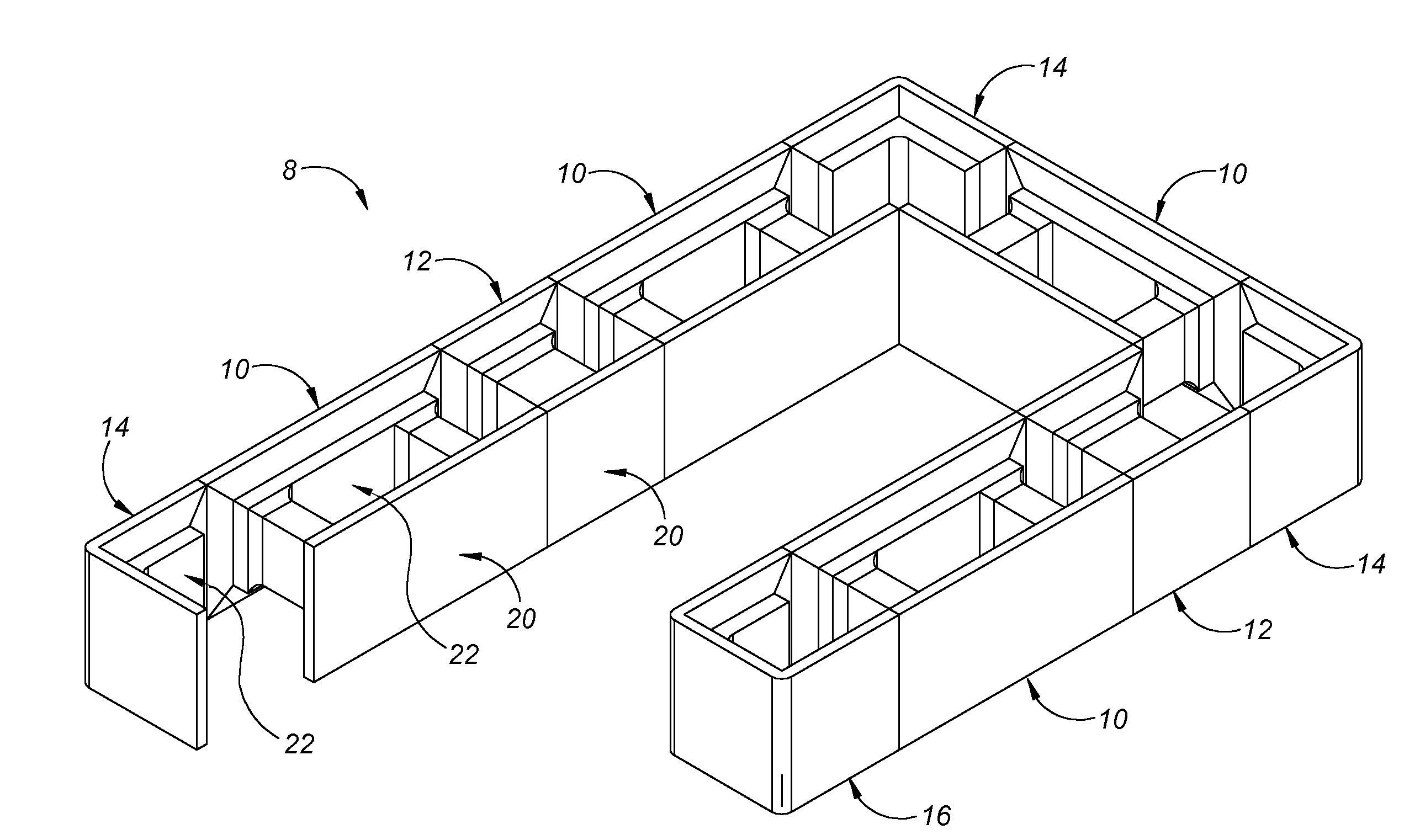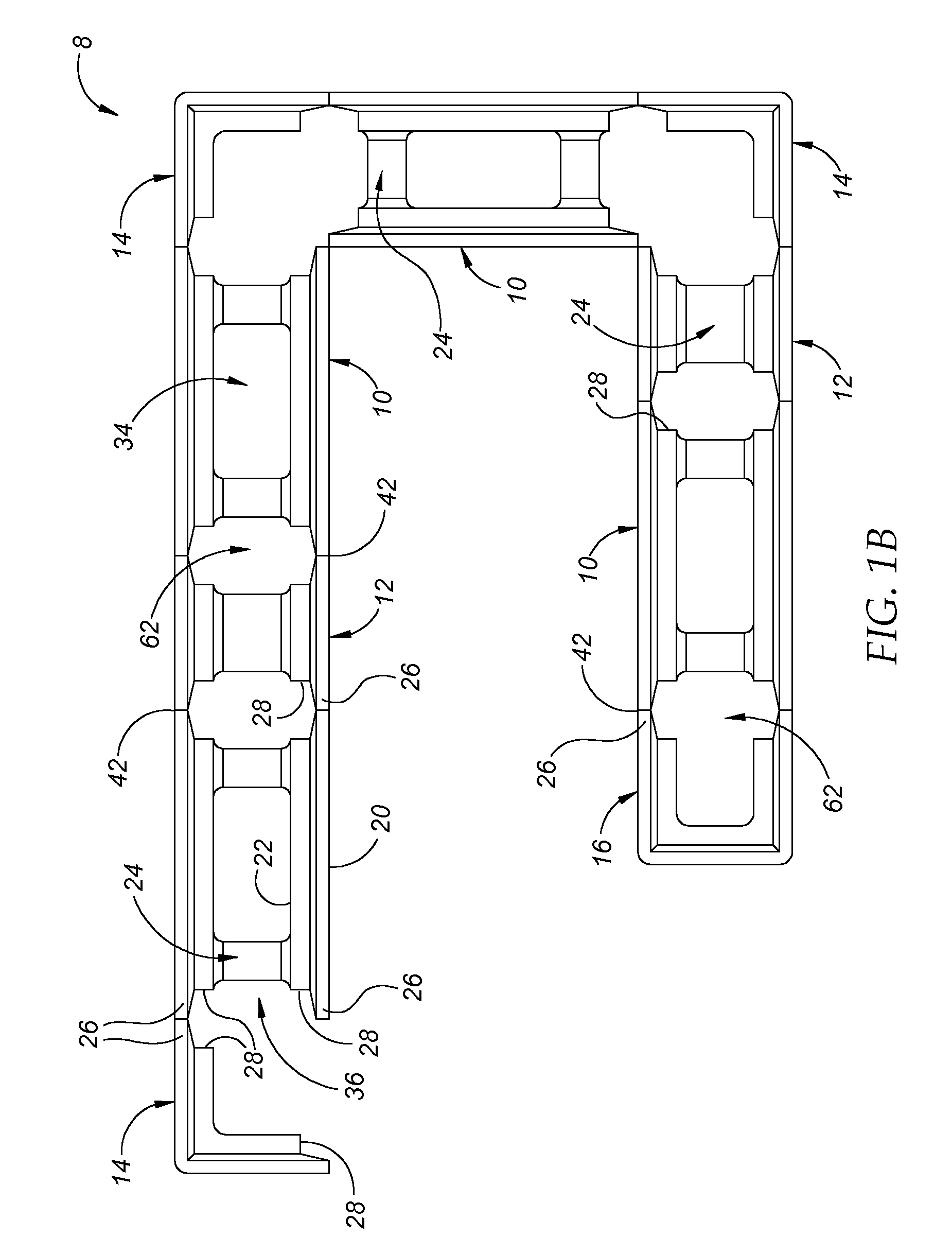Interlocking mortarless structural concrete block building system
a technology of interlocking mortar and structural concrete, which is applied in the direction of walls, constructions, building components, etc., can solve the problems of inability to communicate horizontally, the final product is usually heavy and rough in texture, and the actual performance of the core is marginal, so as to achieve enhanced performance, improve efficiency, and improve the effect of construction efficiency
- Summary
- Abstract
- Description
- Claims
- Application Information
AI Technical Summary
Benefits of technology
Problems solved by technology
Method used
Image
Examples
Embodiment Construction
[0044] A representative embodiment of an interlocking mortarless structural concrete block building system 8 is illustrated in FIGS. 1A-1B. A basic block layout encompassing straight walls, corners, and ends is shown in perspective in FIG. 1A and the same layout is shown in a top view in FIG. 1B. The system 8 is designed for assembly in which a plurality of blocks 10 are stacked in successive horizontal courses in a staggered relationship using four different block configurations. The basic repetitive unit, the runner block 10, has a length twice as long as it is wide. A half block 12 is the same width and half the length as the runner block 10. The corner block 14 has two adjacent walls of the same width as the half block. The end block 16 consists of three adjacent walls all of the same width as the runner block 10. Additional embodiments are shown in FIGS. 2, 3, 4, and 5 illustrating various units within the system. FIG. 6 shows the system 8 in use which is described in more deta...
PUM
 Login to View More
Login to View More Abstract
Description
Claims
Application Information
 Login to View More
Login to View More - R&D
- Intellectual Property
- Life Sciences
- Materials
- Tech Scout
- Unparalleled Data Quality
- Higher Quality Content
- 60% Fewer Hallucinations
Browse by: Latest US Patents, China's latest patents, Technical Efficacy Thesaurus, Application Domain, Technology Topic, Popular Technical Reports.
© 2025 PatSnap. All rights reserved.Legal|Privacy policy|Modern Slavery Act Transparency Statement|Sitemap|About US| Contact US: help@patsnap.com



